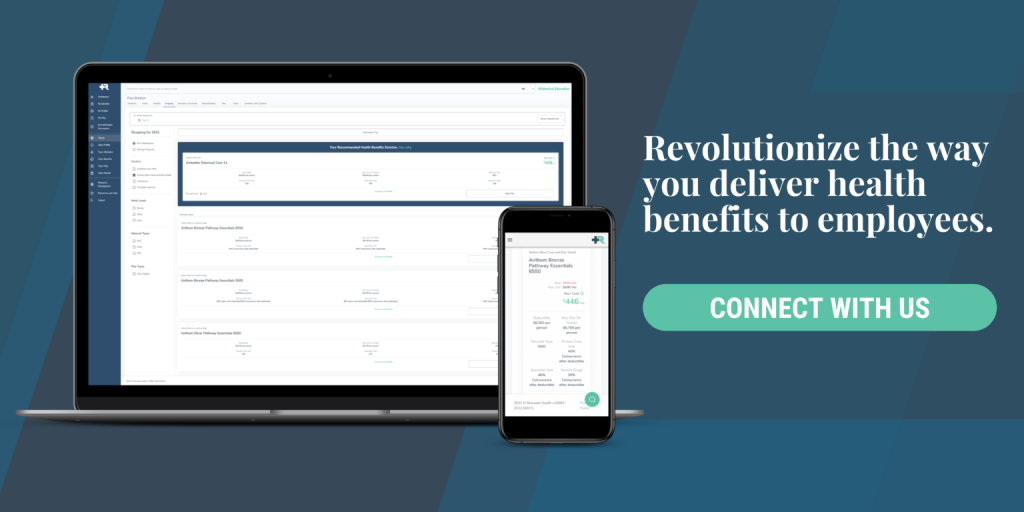Traditional group health plans have been around for several decades. Boiled down, traditional insurance means a monthly premium is paid for a plan, and most of the risk is then transferred from the individual to the carrier. Traditional group plans consist of the same core elements: deductibles, copays, coinsurance, and the infamous out-of-pocket max. Every year, however, each of these elements continue to increase in cost. These increasing costs keep employers looking for alternative options. Thankfully, new alternatives are becoming available more frequently, and they’re much more accessible to those who want them. Below is an overview of some alternative group health plan options for your team:
Quick Definition:
What is an alternative group health plan?
An alternative group health plan is one that leverages the full spectrum of innovative components to manage risk better and cut costs by using more sophisticated tools and strategies.
1. High Deductible Health Plans (HDHP)
HDHPs began in the early 2000s to provide a more consumer-driven alternative to the traditional group plan. The rules were fairly simple:
- Must have certain minimum and maximum deductibles
- Out-of-pocket max also has certain limits
- No copays or coinsurance before deductible is met
By following these guidelines, enrollees become eligible for a Health Savings Account (HSA).
HDHPs are valuable because the cost of the monthly premium goes down dramatically. Those savings can then be put directly into the HSA, ready to use for any medical expenses that arise.
If you’re looking to transition away from the old group plan, HDHPs are a great first step. It won’t save an incredible amount of money, but it is certainly a move in the right direction.
2. Self-Funded Plan
Similar to HDHPs and HSAs, “self-funded” plans mean you only pay for what you actually use and forgo the expensive monthly premium.
Self-funded plans come in all shapes and sizes. There are level-funded plans, referenced-based pricing, and many other models that have a similar setup.
On a self-funded plan, the employer hires a third-party administrator (TPA) and reimburses medical claims. Often, the employer also purchases network access or creates direct contracts with local providers.
Self-funded plans can be designed to include copays or be set up as an HDHP, depending on preferences. Additionally, there must be a reinsurance policy to protect the employer from paying too many claims in one year.

3. Individual Coverage HRA (ICHRA)
Health Reimbursement Arrangements (HRAs) have been around since 1974 as a method for helping employees with medical expenses on a tax-free basis. In the early 2000s, HRAs were used to give individual allowances, which let employers control their medical costs better.
However, the Affordable Care Act removed these options in 2013. Thankfully, recent regulation updates have allowed for the return of flexible HRA usage — meaning they now can be used for medical expenses and monthly premiums. The newest addition to HRAs, which began in January of 2020, is called the Individual Coverage HRA (ICHRA).
Individual coverage HRAs are certainly the biggest update to health insurance since the ACA. The Department of Labor expects to see 800,000 employers move this alternative group health plan over the next 3 years. If you are looking to control costs and give employee choice, an ICHRA might be for you.
4. Remodel Health’s Solution
Remodel Health’s exclusive group solution uses supplemental wage increases. It leverages IRS Notice 2015-17, which allows for employers to give extra pay instead of health benefits. On average, employers can see 34% savings on this model, while still minimizing risk for their team. This option also provides the greatest flexibility for plan choice.
Though it is not technically a group plan, it feels very similar. When giving wage increases as an alternative group health plan, it gives employees the option to use their budget toward spousal plans, short-term plans, sharing ministries, and more. It even unlocks tax subsidies and extra plan options through the Individual Marketplace.
Remodel Health’s solution allows employers to fix their costs and allows employees to choose what’s best for them.
Estimate Your Savings
If you’re interested in learning more, we’d be happy to connect you with our benefits consultants to provide you with a full, free analysis of what you’re currently doing for health benefits, and explore all of the alternative solutions available for your organization.

Important Notice: Remodel Health does not intend to provide specific insurance, legal, or tax advice. Remodel Health always recommends to consult with your own professional representation to properly evaluate the information presented and its appropriate application to your particular situation.
